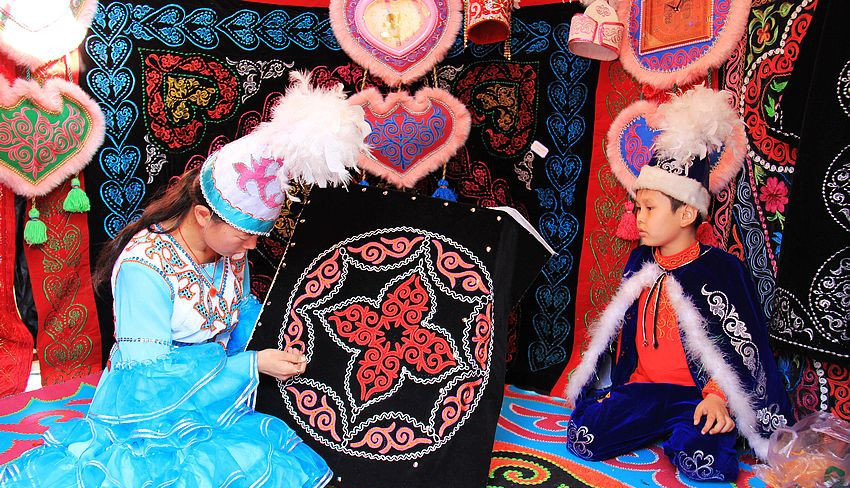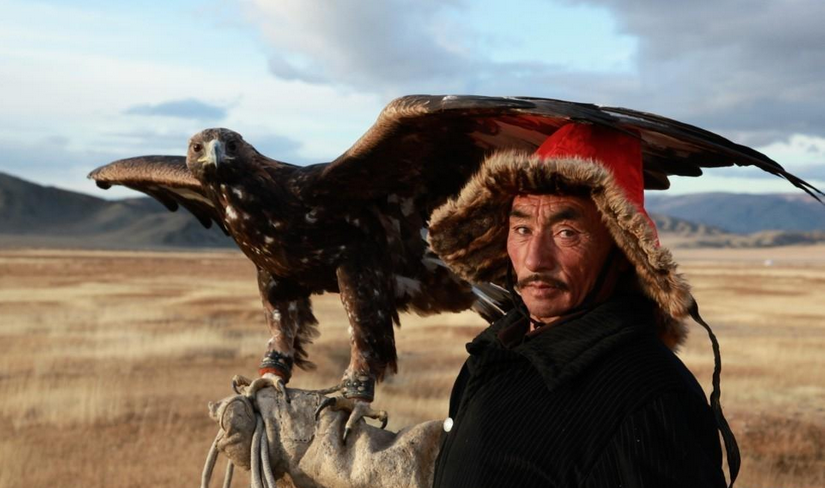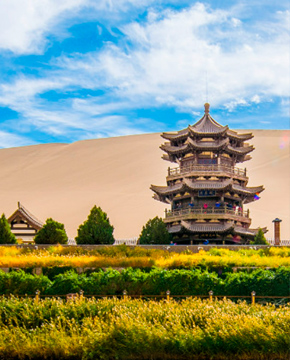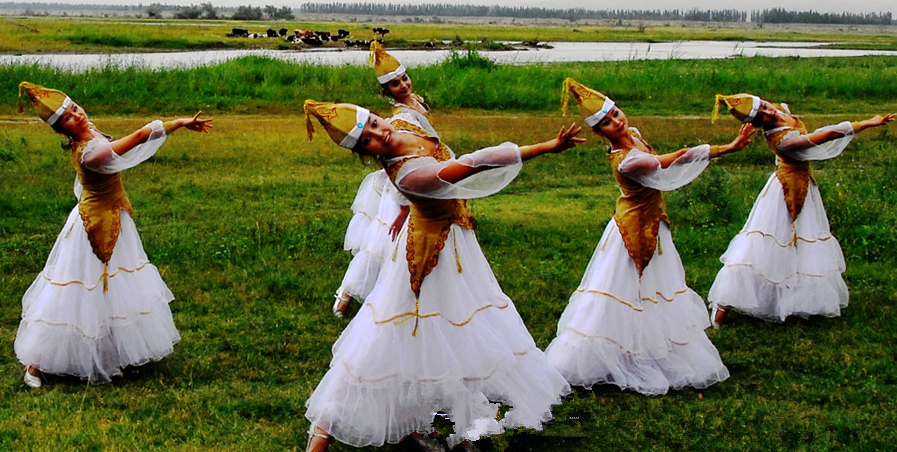
The Kazak in Xinjiang has a population of over 1.2 million with the majority living in the Ili Kazak Autonomous Prefecture, Mori Kazak Autonomous County and Barkol Kazak Autonomous County. The Kazak Language is member of the Turkic Language Group of the Altaic Language Family and is classified into two dialects: the southwestern and northeastern dialects. The forefathers of Kazak believed in other religions in different times but in the sixteenth century they turned to Islamism since they accepted it in the eight century.
The Kazak has a long history. As early as the Han Dynasty (the 2nd century B.C.-A.D. 2nd century), Wusun people, a nomadic people, were believed as one of the forefathers of Kazak. They had relations with Turks (the mid-6th century) , Geluolus and Uighurs (10-12th century), Khitans(12th century), Kelies, and Namans(13th century).
Except for a few settled farmers, most of the Kazaks live on animal husbandry production. They migrate to look for pastures as the seasons change, leading a nomadic life. The Kazak is proud of horse-riding. Grazing, transportation, expedition, and even their life depends heavily on horses. Therefore, they are named “a nationality on the horseback”. in spring, summer and autumn, they live in collapsible round yurts and in water in flat-roofed earthy or wood houses in the pastures. In the yurts, living and storage spaces are separated. The yurt door usually opens to the east. They ride for business and some take sleighs in winter.
Kazak herdsmen are traditionally clad in long-sleeved furs and garments made of animal skins in winter and shirts, trousers, shawls and long gown in summer. Women wear red colorful dresses. Their hats are assorted in design. The pastoral Kazaks live off their animals.
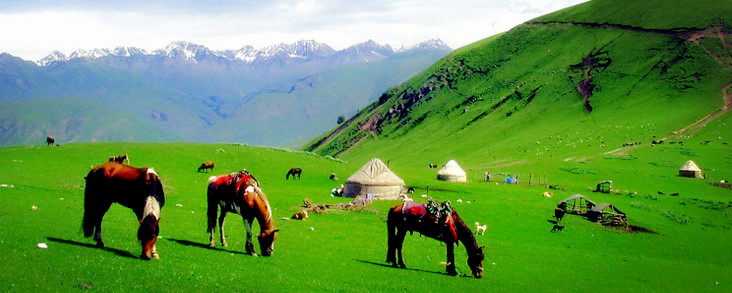
Their diet mainly contains meat, food made by flour and dairy products, in which mutton is the top choice and the horse meat is the best. Horse intestine, hard cheeses (milk dough), cloudy and sour horse milk wine are their special food. Moreover, Kazaks will not live without milk tea for a single day.
Kazak's arts have a great variety, including crafts, music and dance. In terms of crafts, there are sculpture, embroidery and picture design. The two-stringed instrument, “Dongbula”, is their favorite and the folk singer and storytellers, “Akens”, are grown by generation and generation.
This ethnic minority nationality has its own rich literary heritage. For example, there are many fair-tales and stories about animals and human's life. Poetry includes folk poems, epics, love poems and legend poems. Because of their love to horses, all sports are related to horses, such as horse-racing, sheep tussling, “girl chase”, “pick-up-silver-coin”, and “shoot-shoe-shaped gold ingot”, etc.